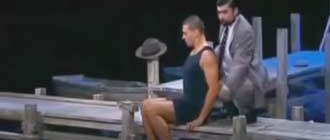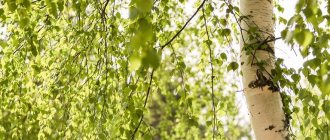On the topic: methodological developments, presentations and notes
Summary of the final speech therapy lesson in a group for children of the 7th year of life with OHP “School of Dwarfs”.
The abstract was developed within the framework of the thematic ten-day period “My Family” in accordance with the stage of work on the speech (the stage of question-and-answer speech).
A retelling of L. Tolstoy’s story “The Bone.”
Goals: Correctional and educational: 1. Fix the concept of “vowel sounds”, characteristics, designations; correct pronunciation and discrimination of vowel sounds “A”, “U”, “I”, “O”;2. Continue ra.
Goal: - Articulation gymnastics (a set of exercises to develop mobility of the lips and tongue). - Replenishment of vocabulary on the topic: “Vegetables”. - Learn to use verbs depending on the name.
Lesson to consolidate the correct pronunciation of the sound Ш in syllables, words, sentences.
Lesson notes aimed at expanding, clarifying and activating children's vocabulary based on the lexical topic: “Vegetables. Garden". Expanding ideas about the importance of adult work. Develop.
Source
Summary of the lesson “Work in the vegetable garden and flower garden” for children of the senior group
Transcript
1 State professional educational autonomous institution of the Yaroslavl region Rybinsk vocational pedagogical college for a group of preschool children Lesson summary “Work in the vegetable garden and flower garden” for children of the senior group Rybinsk, 2016
2 Objectives: to form an idea of the sequence of planting seeds and bulbs using a diagram of the labor process; give an idea of seeds - these are future plants and bulbs - future vegetables and their growth. to cultivate in children friendly relationships, strong-willedness, curiosity and observation. Preliminary work: examining paintings, postcards, illustrations of vegetables, flowers and people’s labor; conversation about the benefits of vegetables and the beauty of nature; familiarization and application of a diagram-model of the labor process during classes; learning proverbs - sayings about work; preparing a bed for planting vegetables and a flower bed.
3 Progress of the lesson: - Guys, please tell me what time of year it is now? - That's right, the time of year is spring. — What do people do at their dachas in the spring? (People plant vegetable gardens). — What do they plant in the garden? (Onions, carrots, beets, potatoes, radishes, etc.) - Correct. How can you say in one word what they are planting? (vegetables). - Well done, that's right. - Now I’ll tell you a riddle, and you listen carefully! Before we ate it, we all had time to cry. (Onion) - That's right guys - it's an onion. “Today you and I will plant onions.” - And now I’ll tell you how to plant onions correctly. Look at the model diagram. (Display of model diagram with explanation). “Here I set myself a goal: “Plant onions.” — What do we take for planting onions? (Onion bulbs and finished bed). -What tools do we need for work? (Shovel, rake, watering can). -What is a shovel for? (A shovel is needed to dig the ground). -What are rakes needed for? (We loosen the ground with a rake.) - That's right guys, we are loosening the ground with a rake. -Why do we need a watering can? — That’s right, we need a watering can to water the garden. — What labor actions will we do? Look carefully at the model diagram! - First we will dig up the ground and loosen it. - Now we will make holes. - Then we will water each hole with a watering can. “And then we’ll plant the onion bulbs in the holes.” - Then you need to cover the holes with earth with your hands. - Then pour water from a watering can. “As a result, we should have onions growing.” - And now we’ll go to the garden and our beds. (The teacher and children go to the beds. The process of planting onions with the teacher’s explanation according to the diagram). (After planting, fix what you did and what is needed for the onion to germinate - water, sun, care, loosening. Cleaning tools). - And now we’ll play the game “Taste it.”
4 (On the table there is a tray with chopped pieces of vegetables: carrots, cabbage, potatoes, cucumbers, beets, etc.) - Guys, close your eyes tightly and open your mouth wide. (Children close their eyes and open their mouths, at this time the teacher puts a piece of vegetable in the child’s mouth. After chewing, the children tell the teacher what they ate). - Guys, how can you say in one word what you ate? (Vegetables). -All vegetables grow in the garden. They contain a lot of vitamins. They are very useful for our body. — Have you guys had a rest? (Yes). — Guys, please tell me, do you like our plants that live in our group? - Why do you like them? - What do you and I do to make them so beautiful? (We water, loosen, dust, love them). -Do you want your area where we walk to be just as beautiful? — Guys, what are the names of the plants that are in our group? -Where do they grow? -What? (In the house. These are indoor plants. They grow in pots). - Right. These are indoor plants and they grow in pots. — What kind of indoor plants do you know? Name it. (Begonia, Impatiens, Tradescantia, Geranium, Ficus, Violet, Cactus, etc.) - Well done guys, you know a lot of flowers. - But besides indoor plants, there are other flowers that grow outside. - Where exactly do they grow? (In flower beds). -What street flowers do you know? (Chamomile, Dandelion, Narcissus, Peonies, Oaks, Roses, Carnations, etc.) -And now I’ll tell you riddles, and you listen carefully. A ball grew on a tall thin leg by the path, a breeze rustled and scattered this ball. (Dandelion) Little sisters Golden Eye, White eyelashes (Chamomile) are standing in the garden - Well done, you guessed right. - Guys, who knows what this is? (The teacher shows the seeds). — These are the seeds of flowers called “Marigolds.” Flowers like these can grow from these seeds (Teacher shows a photo with flowers).
5 - Imagine, guys, how beautiful it will be on our site when the “Marigolds” bloom. “But for these seeds to germinate, grow, and bloom, we need to work a lot.” - What should we do with these seeds? (The teacher listens to the children’s answers, then arranges everything in a chain of action according to the model diagram. Show the model diagrams with an explanation). - Here I set myself a goal: “Plant flowers.” -What do we take for this? (Seeds, flower bed) -What tools do we need to work in a flower bed? — What labor actions will we do? -First, we dug up the ground and loosened it. -Now we will make a groove. -Then we will mold the groove. -And then we will sow the seeds of “Marigolds”. -Next we will fill the grooves with seeds with soil. -And we’ll pour it from the watering can again. (The seeds require very careful watering, otherwise they will float, so they are sprayed with a watering can with holes). -What will we do to make our seeds germinate and beautiful flowers grow? (Sun, water, loosen, care, etc.) -Only then will we have the result: “Beautiful Marigold flowers will grow.” “And now you and I will have a little rest.” Imagine that we are in a flower meadow. A tall flower grew in a clearing, In the spring morning it opened its petals, All the petals received beauty and nutrition, Together they gave roots underground. (The teacher and children perform hand and finger movements) - And now we will go to our flower bed. (The teacher and the children go to the flower bed. The process of sowing seeds is explained by the teacher according to the diagram. After sowing the seeds, reinforce what they did with the children. And remember what is needed for the seeds to germinate) - Guys, now let’s remember the proverbs and sayings about work . Which ones do you know? “You can’t catch even a fish from a pond without difficulty.” Business before pleasure. Labor feeds, but laziness spoils. Patience and work will grind everything down. - That's right, guys. Well done, good. Thank you. -The lesson is over. (Cleaning tools)
Progress of the lesson
1. Organizational moment
Psycho-gymnastics. Relaxation exercises
.
"Wind-up Toys"
.
Children, now you will turn into wind-up toys. Turn around yourself, turn into a Masha doll.
Children depict a doll, a dancing bear cub, a bunny playing a drum, and a cheerful Parsley
The wind-up doll is broken.
Children freeze in a certain position
2. Development of auditory attention
Game "What does it sound like?"
Toys are examined and their sounds are compared. Recognizing toys by sound.
3. Differentiation of the concepts “sound - word”
Toys are on display: a doll, a train and a hammer. How does a doll cry? (Ah-ah-ah.)
What did we say?
(Sound)
.
How does the train sound? (Uh-uh.)
Is it a sound or a word?
(Sound.)
How does the hammer knock?
(D-d-d. This is also a sound.)
Name the words - the names of the toys.
Sticks are placed on the board to represent each word spoken.
We named a lot. (words)
.
Stripes are displayed - symbols of words.
Look at the stripes, these are houses of words. We will denote words with these stripes. Do you remember what words are made of? (From sounds.)
Make
a cup with
, gather them together and say the word.
Speech therapist
pronounces the words slowly, in a whisper, and the children speak loudly and in unison.
Kuuklaa, mmyachiik. (doll, ball)
.
How do we designate sounds? (Circles.)
Open your pencil cases, take a red circle in your right hand, and a strip like this in your left. What do we mean by this stripe? (Words.)
If I say a word, raise the bar; if you hear a sound, raise the circle.
Speech therapist
pronounces vowel sounds and words, and children show the corresponding symbol.
4. Development of speech hearing and phonemic perception
The name of each item has its own sounds. If we replace even one sound, we will not recognize the word. Now listen to me carefully, I will pronounce words correctly and incorrectly, and you clap your hands only when you hear the correctly spoken word: bunny, dyka, plover, tukolka, doll, mukolka (etc.)
.
5. Familiarization with the concept of “words - actions”
. Updating the verb vocabulary
Children, we already know that the living and inanimate world surrounds us. What question would you ask if you wanted to know the name of a living thing? (Who is this)
About objects of the inanimate world, how do you ask?
(What is it)
If we want to know about the actions of humans or animals, how do we ask?
(What is he doing)
Pictures depicting a rooster, kitten, cow, hare are displayed
What does the rooster do? (Stands, sings, crows, pecks.)
Selection of verbs for the words kitten, cow, hare. These words refer to the actions of animals. Inanimate objects can fall, stand, break, or lie down. What does the doll do? (Sits, lies, walks, waves.)
What is Anya doing?
The instructions for performing actions are given in a whisper (Jumps, walks, waves.)
The doll and Anya performed similar actions. How is the doll different from Anya?
Children's reasoning
6. Physical exercise
Game “We won’t tell you where we were, but we’ll show you what we did.”
Dance moves to music.
7. Practical mastery of singular and plural verbs
What did we do? (Danced, had fun, ran, jumped.)
We called action words
A toy car is on display.
What does the machine do? (Stops, drives, honks, brakes.)
Another car is being added
What do machines do? (They stand, drive, honk, brake.)
(Imitation of driving a car.)
Vanya is going, and the children. (are going)
.
Pasha is carrying the cargo, and Tolya is with Kolya. (carrying cargo)
.
Dima honks, and Anya and Dima... (honk)
.
A car is driving far away, its horn is barely audible. Make the sound in a whisper. Take a breath, say the sound a little louder, the car is approaching. Let us inhale again and as we exhale we pronounce the sound loudly. The car is removed. The sound u is pronounced with the voice fading.
9. Carrying out instructions consisting of two or three actions. Mastering past tense verbs
Speech therapist
gives instructions to one child in a whisper. It performs two or three actions. Children observe, then answer the question: What did Tanya do? The task is given to all children
Stand up, take a step forward, raise your left arm, lean to the right. What have you done? (They stepped, raised their hands and bent over.)
What words did you use?
(Action words)
.
10. Denotation by verbs of the work of individual human organs
What do we do with our hands? What are we doing with our feet? What does our heart do? What is our head doing? Every person should take care of their body. What should you do to have a healthy body?
Children's reasoning. Speech therapist's summary
.
11. Summary of the lesson
Reinforcing the concepts of “action words”
.
Publications on the topic:
Lesson notes for the senior group “Vegetables” Topic: Vegetables Purpose: to consolidate children’s knowledge about vegetables. Objectives: Educational: 1. Repeat the names of vegetables (carrots, potatoes, onions, beets,...
How vegetables will not be born without our help. As soon as spring has arrived, we plant seeds. What a garden! People are surprised. The sun warmed the earth.
There is so much trouble in the spring-summer period at dachas, personal plots, etc. But there are no less joyful moments. Probably every one.
Notes on the formation of lexical and grammatical means of language and the development of coherent speech “Vegetables. Vegetable garden" Goal: expand the volume of the dictionary, enrich the dictionary with the names of vegetables. Objectives: correctional and educational: teach to use nouns.
Yulia Klochek
Summary of the lesson on speech development “Vegetables. Garden"
Target :
Compiling a descriptive story “Tomato”
by pictures-symbols.
Correctional educational tasks:
formation of nouns with diminutive suffixes;
mastering verbs with different meanings;
selection of relative adjectives to nouns;
use in speech
sentences with the meaning of opposition;
Corrective and developmental tasks
:
develop
and activate vocabulary on the topic
“
Vegetables ”
;
develop
mental activity, attention;
Correctional educational tasks:
instill in children an interest in the environment;
develop proper nutrition skills;
Equipment: pictures-symbols; didactic game “Let's help Lisa the goat”; pictures of vegetables
.



